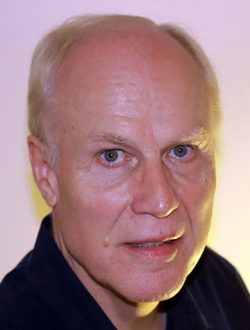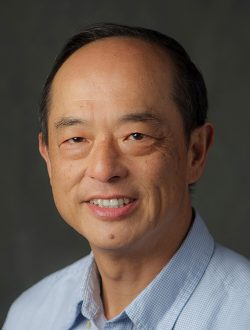MTT-S Winter Technical Meeting, AdCom, IMS2020 TPRC
https://radiowirelessweek.org/
IEEE Radio and Wireless Symposium, IEEE Topical Conference on RF/microwave Power Amplifiers, IEEE Topical Meetings on Silicon Monolithic Integrated Circuits in RF Systems, Wireless Sensors and Sensor Networks (WiSNet), IEEE Space Hardware and Radio Conference (IEEE SHaRC), Aspects of RF and Microwave Test and Measurement (ARFTG), Internet of Things (IoT) Summit

MTT-S Winter Technical Meeting - Saturday, First presentations of newly appointed 2020-2022 Distinguished Microwave Lectures (Ruonan Han, James Hwang, Jon Martens, James M. Schellenberg)
Details: https://www.mtt.org/distinguished-microwave-lecturers/
MTT-S MGA Re-Vamp Meeting - Friday, 4 to 6PM, followed by dinner, multiple other committee meetings and new MTT-S AdCom training for our chapter member Terry Cisco
MTT-S Committee and AdCom Meetings - Saturday (all day) and Sunday, includes breakfast, lunch and dinner. Chapter Chair Jim Weiler will present the MTT-S IEEE Region 6 Chapter Activities Report in MGA Committee (Saturday 8AM to 11AM), Goutam, Peter, Imran and other chapter members lead or are members of multiple MTT-S Committees and have the right to vote at the AdCom meeting.
IMS2020 TPRC - Sunday, 275 recognized experts in various fields of MTT-S meet to select the papers that will be presented during IMS2020 in Los Angeles in June. Several of our chapter members have been selected as members of the IMS Technical Program Review Committee (TPRC).
Date and Time
Location
Hosts
Registration
-
 Add Event to Calendar
Add Event to Calendar
- Grand Hyatt San Antonio
- 600 E. Market Street
- San Antonio, Texas
- United States 78205
- Click here for Map
- Contact Event Host
-
https://radiowirelessweek.org/index.php/
- Co-sponsored by MTT Society
Speakers
 James M. Schellenberg of QuinStar Technology
James M. Schellenberg of QuinStar Technology
MM-wave GaN Power Amplifiers: Technology to Power the Future
The emergence of 5G cellular has created new interest in the millimeter-wave spectrum. This frequency band (30 to 300 GHz) remains a great untapped resource that must be utilized in order to realize the goals (5G and beyond) of the Internet and cell phone industries. There simply is not enough bandwidth at lower frequencies to satisfy future system requirements for speed and capacity. The millimeter-wave spectrum is also of great interest to military and industrial planers, where the enhanced resolution provided by greater bandwidths is necessary to meet future systems goals. Fortunately, a new device/materials technology has emerged which can meet these requirements. This is GaN on SiC substrates. MMICs fabricated with this high bandgap materials offer a factor of 10 improvement in the power density compared with older technologies such as GaAs and InP.
This talk will focus on GaN MMIC technology and how it can address industry (commercial and military) power needs at millimeter-wave frequencies. I will first present where the technology currently is in terms of power, efficiency and frequency, and then present where it is headed. I will also present the factors limiting performance and cost and offer possible solutions.
Biography:
James M. Schellenberg (S’68-M’71-SM’94-LSM’10) was born in Reedley, California in 1945. He received the B.S. degree in electrical engineering from Fresno State University, Fresno, CA in 1969, and the M.S. degree in electrical engineering from Johns Hopkins University, Baltimore, MD, in 1973.
From 1969 to 1978, he was employed by Westinghouse Electric Corporation, Advanced Technology Laboratories, in Baltimore, MD where he was responsible for bipolar and FET power amplifier/combiner design. From 1978 to 1988 he was employed by Hughes Aircraft Company, Microwave Products Division, in Torrance, CA. There he was responsible for many industry firsts in GaAs hybrid/monolithic IC technology, particularly at millimeter-wave frequencies. From 1988 to 2005 he was with Schellenberg Associates developing power MMICs for millimeter-wave applications. From 2005 to 2008 he worked for Trex Enterprises in Kahului, HI developing mm-wave imaging radars. In 2008 he joined QuinStar Technology as their Chief Engineer.
Mr. Schellenberg is the inventor of the radial-line power combiner (U.S. Patent No. 4,234,854) and the Dolph-Tchebycheff planar power combiner (U.S. patent 4,835,496) and has pioneered the development of hybrid/monolithic FET amplifiers/oscillators at millimeter-wave frequencies. He has been awarded the 1978 IR-100 Award for the FET radial line power combiner and the 1981 ISSCC Beatrice Winner Award. He is the author of 8 U.S. patents and more than 50 technical papers.
His current research interests include nonlinear analysis/modeling of power amplifiers, high-power broadband amplifiers/combiners and millimeter-wave GaN power MMICs.
Email:
 James Hwang of Cornell University
James Hwang of Cornell University
Microwaving a Biological Cell Alive ‒ Broadband Label-free Noninvasive Electrical Characterization of a Live Cell
Microwave is not just for cooking, smart cars, or mobile phones. We can take advantage of the wide electromagnetic spectrum to do wonderful things that are more vital to our lives. For example, microwave ablation of cancer tumor is already in wide use, and microwave remote monitoring of vital signs is becoming more important as the population ages. This talk will focus on a biomedical use of microwave at the single-cell level. At low power, microwave can readily penetrate a cell membrane to interrogate what is inside a cell, without cooking it or otherwise hurting it. It is currently the fastest, most compact, and least costly way to tell whether a cell is alive or dead. On the other hand, at higher power but lower frequency, the electromagnetic signal can interact strongly with the cell membrane to drill temporary holes of nanometer size. The nanopores allow drugs to diffuse into the cell and, based on the reaction of the cell, individualized medicine can be developed and drug development can be sped up in general. Conversely, the nanopores allow strands of DNA molecules to be pulled out of the cell without killing it, which can speed up genetic engineering. Lastly, by changing both the power and frequency of the signal, we can have either positive or negative dielectrophoresis effects, which we have used to coerce a live cell to the examination table of Dr. Microwave, then usher it out after examination. These interesting uses of microwave and the resulted fundamental knowledge about biological cells will be explored in the talk.
Biography:
James Hwang is Professor in the Department of Materials Science and Engineering at Cornell University. He graduated from the same department with a Ph.D. degree. After years of industrial experience at IBM, Bell Labs, GE, and GAIN, he spent most of his academic career at Lehigh University. He cofounded GAIN and QED; the latter became the public company IQE. Between 2011 and 2013, he was the Program Officer for GHz-THz Electronics at the U.S. Air Force Office of Scientific Research. He has been a visiting professor at Cornell University in the US, Marche Polytechnic University in Italy, Nanyang Technological University in Singapore, National Chiao Tung University in Taiwan, Shanghai Jiao Tong University, East China Normal University, and University of Science and Technology in China. He is an IEEE Life Fellow and a Distinguished Microwave Lecturer. He is also a Track Editor for the IEEE Transactions on Microwave Theory and Techniques. He has published more than 350 refereed technical papers and been granted eight U.S. patents. He has researched for decades on the design, modeling and characterization of optical, electronic, and micro- electromechanical devices and circuits. His current research interest focuses on electromagnetic sensors for individual biological cells, scanning microwave microscopy, and two-dimensional atomic-layered materials and devices.
Email:
Address:210 Bard Hall, , Ithaca, New York, United States, 14853-1501
Agenda
Multiple Agenda - MTT-S AdCom, RWW
MTT-S 2020 Winter Technical Meeting - Free
Saturday January 25, Grand Hyatt Riverwalk
